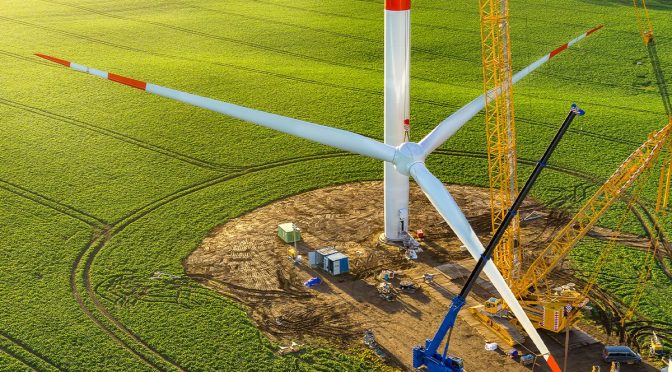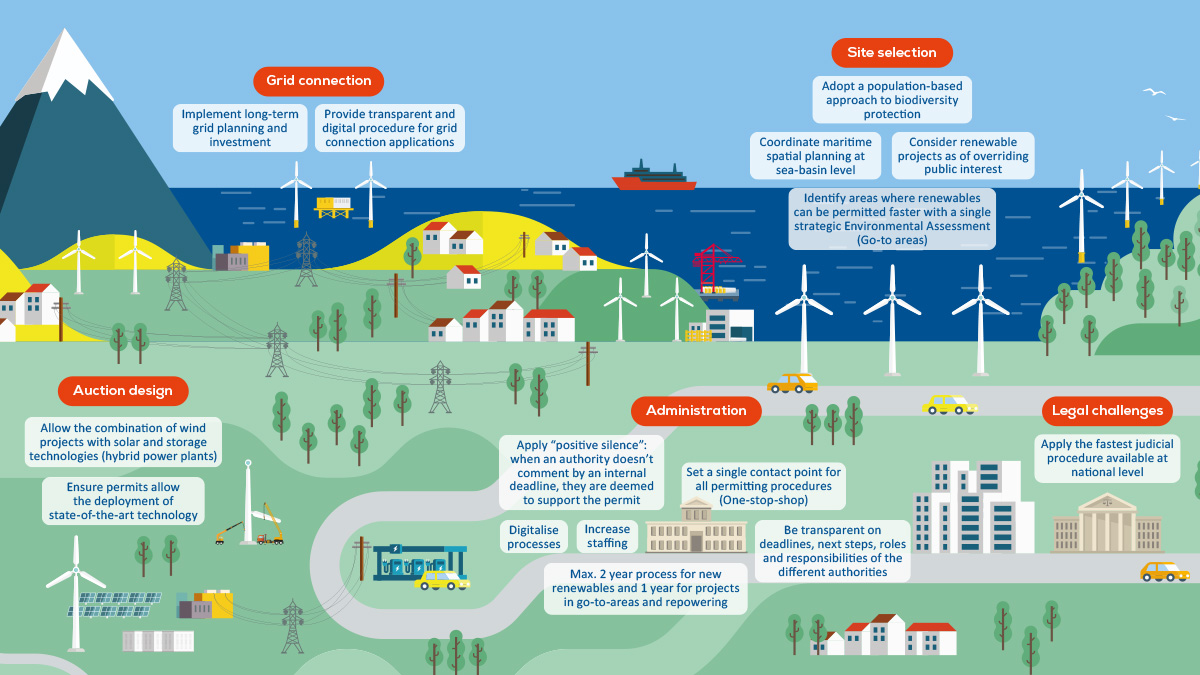The European Commission has presented a new package of measures to help the EU wean itself off Russian fossil fuels well before 2030. The “REPowerEU Action Plan” spells out that renewables are at the core of Europe’s energy security. And crucially it tackles the permitting bottlenecks that are holding back the expansion of wind and solar. A new law will enshrine the principle that renewables are presumed to be in the “overriding public interest”. And they’ve explained in detailed recommendation and guidance documents how Governments can simplify their permitting processes.
Just two weeks after Russia invaded Ukraine, the EU Commission mapped out a new EU energy policy, “REPowerEU”. No more Russian energy imports as soon as possible.
Now the Commission has tabled the “REPowerEU Action Plan”: nine new initiatives that will deliver these ambitious goals with renewables. In light of the Action Plan, European Commission President Ursula von der Leyen will be in Esbjerg today where the Heads of Government of Denmark, Germany, the Netherlands and Belgium are signing a declaration on the expansion of offshore wind in the North Sea.
The Commission says faster renewables-based decarbonisation is key for both climate neutrality and energy security. They propose to raise the EU’s 2030 renewable energy target to 45% as part of the “Fit for 55” package. The Commission also wants to double the deployment rate of individual heat pumps and will ramp up renewable hydrogen to decarbonise Europe’s hard-to-abate sectors including with more dedicated EU funding for electrolyser manufacturing. And they want to strengthen Europe’s renewables supply chains e.g. with new action on the sourcing of key materials.
Crucially, the REPowerEU Action Plan acknowledges the need for wind energy permitting to be “drastically accelerated”. To that end the Commission has tabled a new legislative proposal on renewables permitting which will be folded into the ongoing review of the EU Renewable Energy Directive.
This new proposal does three things. It would enshrine in EU law the principle that renewables are presumed to be in the “overriding public interest”. This means their build-out can be prioritised in the current energy crisis on a case-by-case basis and until climate neutrality is reached. The proposal then creates renewable “go-to” areas that National Governments need to set up on the back of a strategic environmental assessment. In these areas projects will need to be permitted within 1 year. Finally, the Commission keeps the existing permitting deadlines – 2 years for normal new projects, and 1 year for repowered projects – but clarifies which permits and procedures must be delivered within these deadlines.
WindEurope CEO Giles Dickson said: “The REPowerEU Action Plan hits the nail on the head. The EU wants to build out wind energy from 190 GW today to 480 GW in just 8 years. But you can only do that if you simplify the permitting. And that’s what REPowerEU aims to achieve. It also acknowledges the EU has to support the wind industry supply chain – too right: Europe’s 5 wind turbine manufacturers are all operating at a loss today. Bring on this support: new renewables must be made in Europe.”
Alongside the new law on permitting, the Commission has also published a permitting recommendation and detailed guidance to Governments on how exactly they can simplify their permitting rules and procedures. The new guidance outlines best practices on permitting from around Europe and shows what works: how you can digitalise the processes, ensure public authorities work better together, etc.
WindEurope has summarised the main points of the new EU permitting recommendation and guidance in this infographic. It covers best practices on site selection, administration, auction design, grid connection and legal challenges.
WindEurope CEO Giles Dickson said: “The Commission’s action plan on permitting ticks all the boxes. The legal proposals clarify what permits have to be issued within the existing deadlines and create “go-to” areas where projects can go ahead even faster after a strategic environmental assessment. The wind industry remains committed as ever to protect biodiversity and engage local communities. We work closely with NGOs to mitigate impacts on wildlife – and with local communities that host our wind farms.“
In addition to the EU permitting recommendation and guidance, the European wind industry is sharing with national Governments a full list of measures they can take now to simplify and accelerate permitting for renewables. These include for instance applying common sense spatial planning rules, streamlining judicial frameworks to maximum 2 legal appeals, or applying the principle of “positive silence” to all renewable energy projects. The full industry recommendations can be downloaded here.



